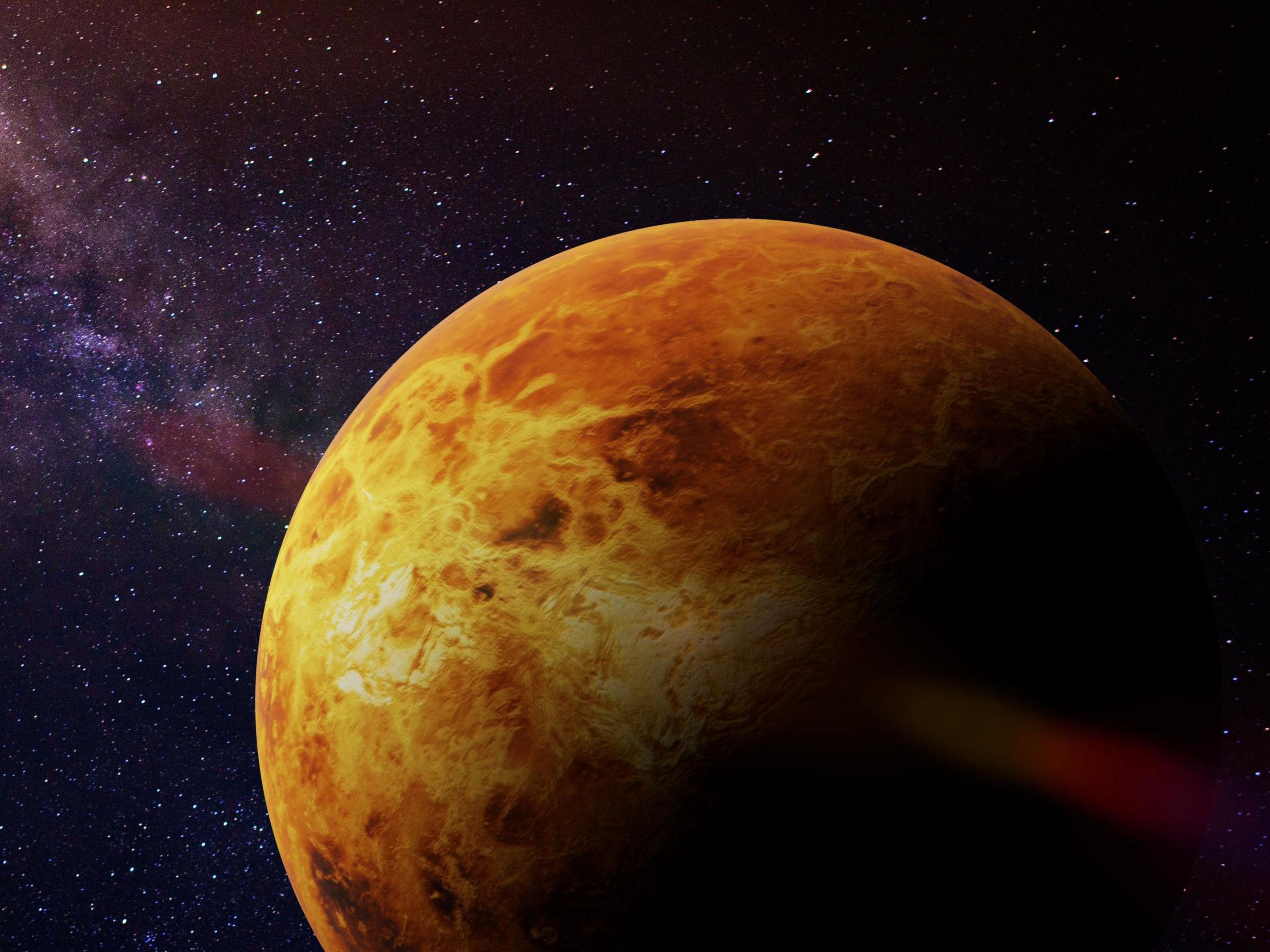Astronauts should visit Venus on their way to Mars, scientists suggest
The trip by Venus would reduce fuel, cost, and be safer for astronauts

A flight to and from Mars should stop off at Venus first, scientists have suggested.
A group of researchers have drafted a white paper, to be submitted for peer review at Acta Astronautica, a journal for the exploration of space, that suggests using Venus as a flyby opportunity is essential in getting to Mars.
“A dedicated year-long Venus flyby mission could serve as a valuable ‘shakedown cruise’ for the deep-space transport systems needed for the first human mission to Mars,” the paper suggests.
Getting humans to Mars can be done in two ways: the first is flying a spacecraft between the two planets when their orbits align.
The downside of such a plan is that astronauts would need to wait up to a year and a half before returning to Earth.
The second notion is slingshotting past Venus, using the planets gravity to alter the craft’s course.
Such an option would reduce the amount of energy needed on the trip, saving fuel and, by extension, cost.
Space agencies could also perform the trip more often. Mars and Earth’s orbits only align for a mission every 26 months, in comparison to every 19 months for a mission using Venus.
“These flybys provide opportunities to practice deep space human operations, and offer numerous safe-return-to-Earth options, before committing to longer and lower-cadence Mars-only flights” the researchers suggest.
“Venus flybys, as part of dedicated missions to Mars, also enable ‘human in the loop’ scientific study of the second planet”.
It is also the case that, should the mission go wrong, that going to Venus first would allow astronauts to quickly change course and return to Earth sooner – something which could be essential on a dangerous mission.
“You … greatly simplify the logistics of going to Mars, especially from the perspective of crew health,” Kirby Runyon a planetary geomorphologist at Johns Hopkins University who is part of the team that developed the white paper, told Space.
“There's science at two planets for much less than the price of two separate crewed missions,” Paul Byrne, a planetary geologist at North Carolina State University, also said.
Missions to Mars are already in development. Nasa has announced that it plans to fly a helicopter on Mars to show that powered-flight would be possible on the planet.
However such a mission, which was expected to land on Mars in February 2021, has been pushed back to 30 July at the very earliest.
If the mission is delayed past 15 August, the engineers will need to wait until 2022 when the planets’ orbits are aligned again.
Getting the Perseverance rover to Mars is expected to cost about $3 billion, as it looks for signs of past alien life and collect specimens for study on Earth.
Should humans desire to build a self-sustaining civilisation on the red planet, it is suggested that at least 110 people will need to travel there.
Join our commenting forum
Join thought-provoking conversations, follow other Independent readers and see their replies
Comments
Bookmark popover
Removed from bookmarks